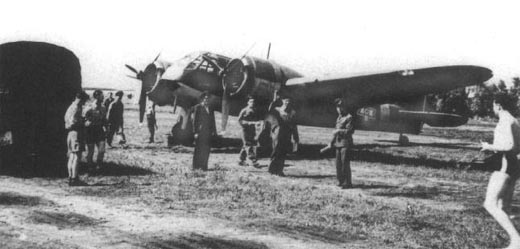|
Romania ordered 40 Bristol Blenheims in 1939, but only 37 made it to Romania, the rest
being lost on the way. They equipped 4 long range reconnaissance squadrons (1st-4th) and
played an important role in providing information on the movement of forces on the USSR,
Hungarian and Bulgarian borders.
In 1941, the 2nd Long Range Recon Squadron was disbanded and its Blenheims given to the
other three squadrons. These units carried out some of the first missions of Operation
Barbarossa, but also suffered some heavy losses: four airplanes in one day! This included
the first loss of ARR in WWII. Until the end of the 1941 campaign another six Blenheims
were destroyed.
In August 1942, because of supply problems, only 27 Blenheims remained in service,
including three ex-Yugoslav aircraft bought from Germany. The ARR's Stalingrad campaign
started the next month, but only the 1st Long range Recon Squadron was equipped with
Blenheims. Three were lost until the end of December, when they were retreated back to
Romania.
Throughout 1943, the few serviceable Blenheims flew mostly over the Black Sea, but
pilots seldom ventured far from the coast.
After 23 August 1944, the three Blenheims were shortly joined with the Ju-88D1s, but
because they were obsolete, they were soon relegated to transport duties.
The Blenheim Mk. IF

Picture from "Rumanian Air Force, the prime decade 1938-1947" by
Dénes Bernád, Squadron/Signal Publications, 1999
| Wingspan |
17.18 m |
| Length |
12.18 m |
| Height |
3 m |
| Weight (empty) |
4000 kg |
| Weight (loaded) |
5334 kg |
| Maximum speed at 4000 m |
447 km/h |
| Service ceiling |
7500 m |
| Range |
1690 km |
| Engine |
2xBristol Mercury VIII 840 HP |
| Machine-guns |
2x7.7 mm |
| Crew |
4 |
| Bombs |
500 kg |
|